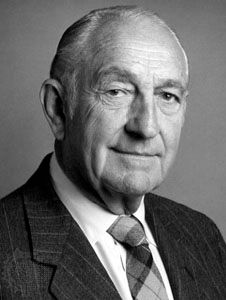David Packard
- Died:
- March 26, 1996, Stanford, California (aged 83)
- Awards And Honors:
- Presidential Medal of Freedom (1988)
David Packard (born September 7, 1912, Pueblo, Colorado, U.S.—died March 26, 1996, Stanford, California) was an American electrical engineer and entrepreneur who cofounded the Hewlett-Packard Company, a manufacturer of computers, computer printers, and analytic and measuring equipment.
After receiving a B.A. from Stanford University in 1934, Packard worked for the General Electric Company in Schenectady, New York. In 1938 he returned to Stanford, where he earned a master’s degree in electrical engineering, and in 1939 he and William R. Hewlett established their firm in Packard’s garage with capital of $538. The company, in which Packard proved to be an expert administrator and Hewlett provided many technical innovations, grew into the world’s largest producer of electronic testing and measurement devices. It also became a major producer of personal computers and laser and inkjet printers. Packard served as Hewlett-Packard’s president from 1947 to 1964, chief executive officer from 1964 to 1968, and chairman of the board from 1964 to 1968 and from 1972 to 1993.
In 1968 U.S. President-elect Richard M. Nixon appointed Packard deputy to Secretary of Defense Melvin Laird. Packard oversaw the initial plans for the development of two of the country’s most successful jet fighter programs, the F-16 and the A-10. He served until 1971, when he resigned and returned to Hewlett-Packard the next year as chairman of the board. In the 1970s and ’80s Packard was a prominent adviser to the White House on defense procurement and management.
In 1964 Packard and his wife, Lucile, founded the David and Lucile Packard Foundation to give grants to nonprofit organizations in such areas as conservation and education. He received the Presidential Medal of Freedom and the National Medal of Technology in 1988.











